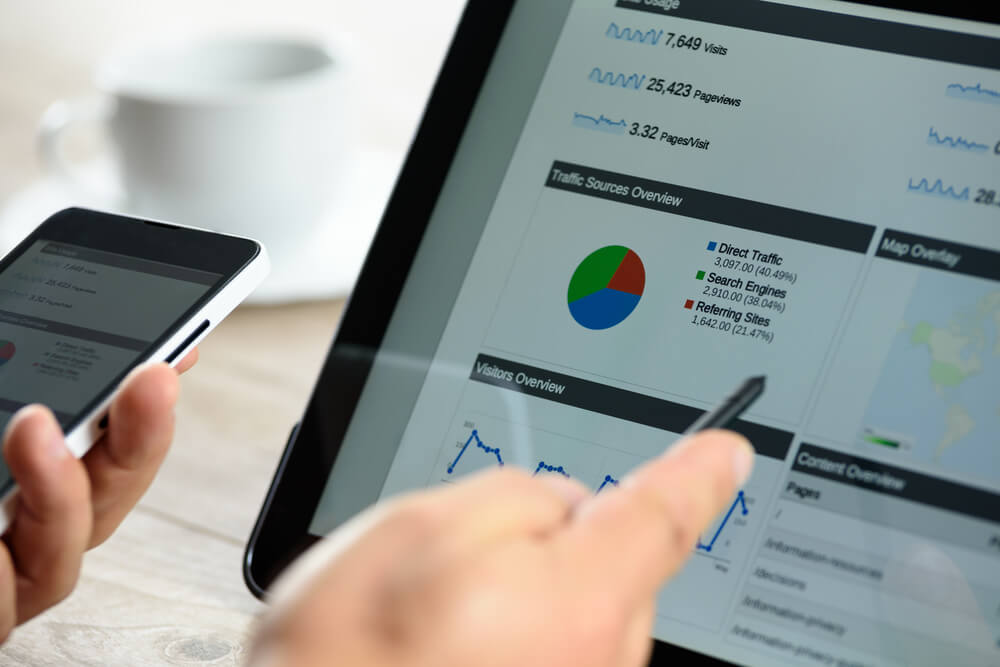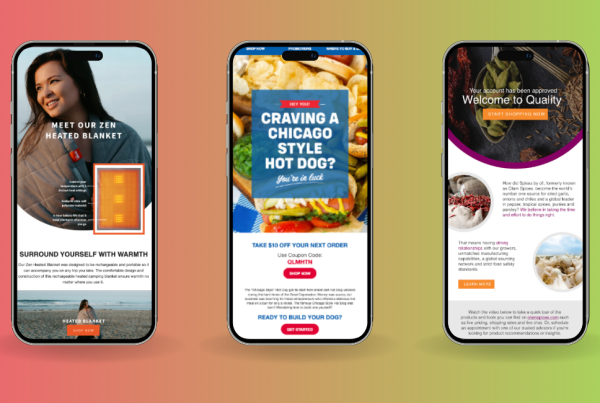Traditional advertising required marketers to take a “spray and pray” approach. They were unable to quantify how many people they reached, who they reached, and if the users were even interested in the product.
Today it’s a different story. Digital marketers are able to measure most of their efforts, whether through social media, email, or PPC.
However, if customers interact with brands through traditional channels like phone calls, it’s much more difficult to measure marketing’s impact on that customer action.
How can businesses determine which calls are the result of marketing?
The best way to tie your marketing initiatives to customer calls is through call tracking.
Call tracking helps businesses figure out which marketing initiatives are actually driving calls to the business. This new avenue of data collection helps you learn more about your customers and make the most of your marketing resources.
How Does Call Tracking Work?
Call tracking applies metrics to an avenue that was previously unmeasurable. The best part is that you can implement call tracking without upending your entire marketing campaign or installing complex code.
Whether you use the integrated Google call tracking capabilities or an independent system, it’s fast and easy to integrate with your advertising and website.
Call tracking works by automatically assigning a different phone number for each marketing campaign. These phone numbers then forward to your main business line, where you answer the phone as usual.
The difference is that you now know the origin of the phone call because a customer could only access that number through certain channels, like a PPC ad. With this data, marketers can compare the volume of call traffic generated by each of their campaigns.
While you can purchase call tracking software, a lot of this functionality comes integrated with Google Ads and Google Analytics.
Google requires that you have a Google Ads account, an active call extension, and that you live in an eligible country to use its call tracking capabilities.
This built-in tracking is perfect for call-only campaigns and call extensions on your ads. Google Analytics will help you measure which PPC ads led to the most call volume so you can optimize your campaigns.
Analytics also gives you the option to set parameters like a minimum call length to weed out wrong numbers or spam calls.
The Benefits of Call Tracking
Call tracking isn’t just another data point; it’s a valuable metric that helps you highlight your value as a marketer.
Call tracking is easy to use and comes with a handful of benefits for brands.
1. Better data
Call tracking empowers marketers to gather better data. Since the data feeds right into Google Analytics, it’s easy to analyze with your other marketing information in one dashboard.
Call tracking shows which PPC ads encouraged customers to convert and give you a call. Not only can you pinpoint your best ads this way, but you also learn a lot about your audience.
Beyond their phone number, Analytics collects data like the number of calls, call duration, location, and demographics so you can learn more about your customers. This data is gold for local SEO because it can show what area customers are calling from.
But a phone call is often not the first point of contact a customer has with your brand. Google Analytics gives marketers a multifaceted view of their customers. For example, you can see the caller’s search history on your website, or how many times they viewed your ad before they called.
Call tracking is so powerful because it gives marketers an accurate conversion rate. You work hard to bring in those phone calls; demonstrate your true ROI with call tracking software.
2. Prioritize resources
Marketing budgets and resources are tight. That’s why a shotgun-style approach to marketing doesn’t work: dedicating resources in a wide swath of campaigns will only dilute your efforts.
Marketers can use call tracking as a tool to prioritize budget dollars. With better data, you can dedicate resources to what’s working so you can get the most results.
Call tracking is arguably easier to implement than initiatives like A/B testing and it gives you more insight into your audience’s needs.
Use call tracking to make decisions based on metrics instead of your gut. Monetize your wins in hard numbers so you can keep on winning.
3. Record phone calls
Call tracking doesn’t just give you better customer data; it also gives you more insight into your business. Depending on your provider, call tracking can be used to record calls for performance management.
Call recording is more important in customer-facing roles like customer service, but it can be a valuable tool for sales and marketing teams, too. This tool improves your business by helping your team members hone their phone skills.
For example, if customers are routinely unimpressed by certain product features, or they’re confused about your process, that comes to light in the recordings. In this way, call tracking helps your business deliver better service while increasing your marketing ROI in the process.
Of course, let your employees know that phone calls are recorded. Focus on growing their skills with call tracking as a tool for improvement.
4. Identify effective keywords
Google Ads call tracking allows you to see which keywords compelled users to call your business. Use this data to adjust your keyword strategy and bids to optimize where you’re investing budget dollars.
Keep an eye on the differences between the keywords that led to a phone call versus keywords pointing to your website. You might find that call-enabled ads use local cues (like “near me”) or that they’re longer. Use this information to your advantage while planning your next PPC campaign.
The Bottom Line
If you advertise your brand’s phone number anywhere, you need to use call tracking. This easy automation makes it a breeze to see how your marketing efforts generate phone calls.
Need a boost with your Google Ads? Logical Media Group can help you set up call tracking and call extensions to get the most ROI for your campaign. Give us a ring to plan your next campaign.









